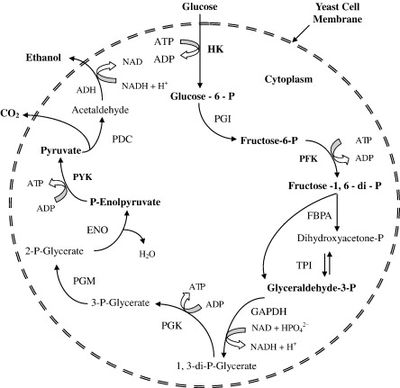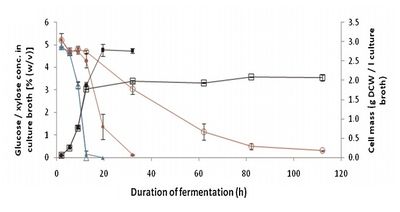Microbial Biofuels: Current Production and Future Prospects
Introduction
By [Student Name]
At right is a sample image insertion. It works for any image uploaded anywhere to MicrobeWiki. The insertion code consists of:
Double brackets: [[
Filename: PHIL_1181_lores.jpg
Thumbnail status: |thumb|
Pixel size: |300px|
Placement on page: |right|
Legend/credit: Electron micrograph of the Ebola Zaire virus. This was the first photo ever taken of the virus, on 10/13/1976. By Dr. F.A. Murphy, now at U.C. Davis, then at the CDC.
Closed double brackets: ]]
Other examples:
Bold
Italic
Subscript: H2O
Superscript: Fe3+
Introduce the topic of your paper. What microorganisms are of interest? Habitat? Applications for medicine and/or environment?
Current Microbial Biofuels: Ethanol Produced by Fermentation

Image source: http://www.sciencedirect.com/science/article/pii/S0734975007001000 [3]
Alternative Ethanol-Producing Microorganisms: Zymomonas mobilis and Escherichia coli

Image source: http://onlinelibrary.wiley.com/doi/10.1002/bit.23021/full [1]
Alternative Feedstocks
Lignocellulose
Fatty Acids and Glycerol
Alternative Biofuels
Other Fermentation Products
Non-Fermentation Products
Improving Microbial Biofuel Production: Recent Developments
Using Efflux Pumps to Improve Biofuel Production
References
Edited by student of Joan Slonczewski for BIOL 238 Microbiology, 2011, Kenyon College.
